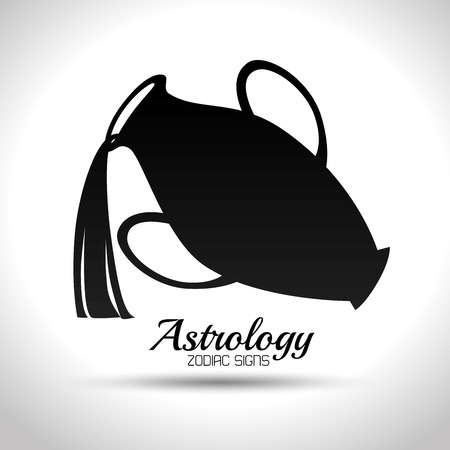Sacred Union: The Cultural Essence of Marriage in Bharat
In the heart of Bharat, marriage is revered not merely as a social contract, but as a profound spiritual journey. Rooted in the timeless wisdom of the Vedas, the marital bond is described as a sacred samskara—a life rite—where two souls unite not only for companionship but for dharmic fulfillment and spiritual evolution. This union, referred to as vivaha, is believed to be orchestrated by cosmic design, intertwining destinies that extend beyond this birth into the tapestry of past and future lives.
Within Indian tradition, marriage is the foundation of society, upholding family lineage and the continuity of samskara (cultural refinement). Ceremonies like saptapadi—the seven sacred steps taken around the holy fire—symbolize shared vows and mutual responsibilities, sanctifying the relationship under Agni Deva’s witness. The alliance is more than emotional or physical; it is a union of souls where partners support each other in artha (material pursuits), kama (desires), dharma (righteous duties), and ultimately moksha (liberation).
Astrology or Jyotish Shastra holds an esteemed place in guiding these unions. Families consult astrologers to match horoscopes, seeking harmony between the stars to ensure prosperity and happiness. The alignment of zodiac signs becomes a reflection of karmic patterns and compatibility, signifying divine approval or caution. Thus, marriage in Bharat transcends individual desires—it is a sacred thread woven through generations, blessed by tradition and celestial wisdom.
2. Zodiac and Nakshatras: Foundations in Jyotish Shastra
Within the sacred tradition of Jyotish Shastra, the ancient Indian science of astrology, the interplay between Rashi (Zodiac Signs) and Nakshatras (Lunar Mansions) forms the very heart of marriage compatibility and relationship harmony. In Bharatiya parampara (Indian tradition), these cosmic blueprints are not merely mystical beliefs—they are guiding lights for families seeking an auspicious union, or shubh vivaah. Before two souls unite in matrimony, their birth charts (janam kundali) are meticulously analyzed to unveil the subtle energies at play, ensuring a harmonious blend of destinies.
The Role of Rashi and Nakshatra in Matchmaking
The Rashi represents the twelve zodiac signs through which the Moon travels, each carrying its own elemental qualities and planetary lordships. Nakshatras, numbering 27 in total, further divide the zodiac into segments reflecting unique cosmic vibrations. Together, they reveal deep insights about an individual’s nature, temperament, and emotional inclinations—crucial factors in marital compatibility.
| Aspect | Rashi (Zodiac Sign) | Nakshatra (Lunar Mansion) |
|---|---|---|
| Number | 12 | 27 |
| Main Function in Marriage | Personality Traits & Elemental Nature | Mental Disposition & Emotional Compatibility |
| Kundali Matching Importance | Mangal Dosha, Guna Milan | Nakshatra Porutham, Tara Milan |
Unveiling Cosmic Harmony: Guna Milan & Nakshatra Porutham
The process of Guna Milan, or points-based compatibility matching, is rooted in both Rashi and Nakshatra analysis. This sacred ritual calculates 36 points (gunas), with a minimum score required to deem a match suitable. Similarly, Nakshatra Porutham, especially revered in South Indian traditions, compares the Moon’s position at birth to assess psychological alignment and future prosperity. These practices ensure not just physical proximity but true union of mind and soul (manasik aur atmik ekta).
The Auspicious Union: Guiding the Search for Soulmates
In every Indian household, from bustling metros to serene villages, the wisdom of Rashi and Nakshatra continues to illuminate the path towards lasting partnership. By understanding these cosmic influences, families invoke divine blessings (aashirvaad) for peace, prosperity, and conjugal bliss. Thus, Jyotish Shastra remains a timeless compass for those treading the sacred journey of marriage.

3. Kundali Milan: The Art of Compatibility Calculation
Within the sacred tapestry of Indian matrimony, Kundali Milan occupies a place of profound reverence. This ancient practice, rooted in the Vedic scriptures, is more than a ritual—it is a spiritual science that seeks to unveil the cosmic harmony between two souls destined for union. The birth charts (Kundalis) of prospective brides and grooms are meticulously analyzed by learned Jyotishis to ascertain whether their destinies align harmoniously.
The Guna Milan System
Central to this process is Guna Milan, an intricate system where eight distinct aspects—known as Ashta Kootas—are evaluated, yielding a maximum score of 36 points. Each Koota measures vital elements such as Varna (spiritual compatibility), Vasya (mutual attraction), Tara (destiny compatibility), Yoni (sexual harmony), Graha Maitri (intellectual rapport), Gana (temperament), Bhakoot (emotional bonding), and Nadi (genetic compatibility). A score above 18 is generally considered auspicious, indicating favorable planetary vibrations for marital bliss.
Dosha Analysis: Navigating Planetary Challenges
No Kundali Milan is complete without the scrutiny of Doshas—celestial blemishes arising from planetary positions. Notable among these are Mangal Dosha and Shani Dosha, which can cast shadows on marital prospects if left unaddressed. Jyotishis, guided by the wisdom of the Rishis, prescribe remedial rituals and mantras to mitigate these influences, ensuring that Grahas do not disrupt the conjugal journey.
The Jyotishis Sacred Interpretation
The role of the Jyotishi transcends mere calculation; they act as divine interpreters, deciphering the subtle interplay of planetary energies etched in each chart. Their guidance is sought not only for compatibility but for ushering blessings of prosperity, progeny, and peace into the new household. Through mantra chanting, pujas, and invoking the blessings of Lord Ganesha and Parvati Mata, families seek to harmonize both seen and unseen forces.
Kundali Milan thus becomes not just a step before marriage but a spiritual rite—aligning individual karmas with universal dharma, and weaving together destinies in accordance with Sanatana Dharma’s eternal laws. In this way, the union is sanctified under the watchful gaze of the cosmos, ensuring a harmonious journey through grihastha ashrama—the sacred stage of married life.
4. Planetary Influences: Grahas and Their Impact on Relationships
In the sacred science of Indian astrology, the Grahas (planets) are regarded as the divine architects of human destiny, especially in the realms of marriage and relationships. The energies radiated by these celestial bodies, most notably Shukra (Venus) and Chandra (Moon), play a profound role in shaping marital happiness or turbulence. In Vedic wisdom, each planet bestows unique vibrations that can either foster harmony or create challenges between partners.
The Significance of Shukra (Venus) and Chandra (Moon)
Shukra is traditionally seen as the Karaka (significator) for love, romance, sensuality, and marital bliss. When Shukra is well-placed in ones Janam Kundli (natal chart), it brings sweetness, understanding, and loyalty to relationships. Conversely, afflictions to Venus may result in misunderstandings or lack of affection. Chandra governs emotional connectivity and mental peace—essential ingredients for a nurturing relationship. A strong Moon cultivates empathy and mutual support, while its weakness can lead to emotional instability.
Key Planetary Yogas and Doshas Impacting Marriage
| Yoga/Dosha | Description | Influence on Relationships |
|---|---|---|
| Kuja Dosha (Manglik Dosha) | Occurs when Mars is placed in certain houses | Potential for conflict, aggression, delays in marriage |
| Gajakesari Yoga | Combination of Jupiter & Moon in Kendra houses | Brings prosperity, stability, harmony in marriage |
| Shukra-Chandra Sambandh | Connection between Venus & Moon | Enhances romance, emotional satisfaction |
| Rahu-Ketu Affliction | Malefic Rahu or Ketu aspecting 7th house/planet | Misperceptions, sudden breakups or unconventional unions |
The Interplay of Grahas in Natal Charts
A careful analysis of both partners’ horoscopes reveals how the interplay of Grahas influences their compatibility. Favorable planetary yogas bless couples with lasting affection and mutual growth; however, doshas like Manglik require remedies such as pujas or fasting to neutralize negative effects. Indian families deeply respect this astrological guidance before solemnizing a union.
The Vedic seers teach that harmonious planetary alignment is akin to tuning the strings of a veena—when done right, it produces sweet music in married life. Thus, understanding the dance of Grahas is essential for fostering enduring relationships steeped in love and respect.
5. Traditional Remedies: Enhancing Compatibility and Removing Doshas
Within the sacred tradition of Indian astrology, the influence of planetary positions and doshas (flaws or afflictions) upon marital harmony is revered as a subtle yet powerful force. Through the guidance of Vedic wisdom, passed down by learned Gurus and respected elders, seekers are provided with upayas—remedial measures—to balance these celestial energies and nurture lasting compatibility between partners.
The Significance of Dosha Shanti in Marriage
One of the most prominent concerns in Kundali matching is the presence of doshas such as Mangal Dosha (Kuja Dosha), Nadi Dosha, or Bhakoot Dosha. These doshas, according to Vedic scriptures, can manifest obstacles in marital life if left unresolved. The ancient seers have prescribed specific rituals known as Dosha Shanti, which are designed to pacify malefic influences and bring about peace and harmony.
Mangal Dosha Remedies
For those afflicted by Mangal Dosha, observing fasts on Tuesdays, reciting Hanuman Chalisa, visiting Lord Hanuman or Lord Subramanya temples, and performing Kumbh Vivah (a symbolic wedding with a sacred pot) are widely recommended by astrologers across Bharat. These remedies channel positive Mars energy and mitigate its adverse effects on matrimonial bliss.
Nadi and Bhakoot Dosha Solutions
When Nadi or Bhakoot Dosha is detected in the horoscope match, elders suggest chanting specific Vedic mantras, offering donations (daan) to Brahmins, and conducting homas such as Maha Mrityunjaya Homa or Navagraha Shanti. These acts of devotion are believed to cleanse karmic baggage and invoke divine blessings for conjugal unity.
General Upayas for Harmonious Relationships
Beyond dosha-specific remedies, traditional guidance encourages couples to observe shared fasts on auspicious days like Karva Chauth or Sawan Somvar, participate together in Satyanarayan Puja, and adorn themselves with gemstones as per their planetary strengths. Offering prayers at family deities’ temples and seeking blessings from elders before entering matrimony further fortifies the bond as per age-old customs.
The Role of Guru Kripa (Grace of the Guru)
No remedy surpasses the grace bestowed by one’s Guru or spiritual mentor. Elders often advise that regular satsang (spiritual gatherings), recitation of holy texts like Vishnu Sahasranama, and surrendering to the feet of a Sadguru can dissolve even the gravest astrological barriers. In Indian tradition, it is through humility and adherence to these time-honoured upayas that couples ensure not just compatibility but a union sanctified by cosmic harmony.
6. Modern Perspectives: Integrating Ancient Wisdom in Contemporary Relationships
Blending Jyotish with Modernity: The Millennial Approach
In today’s rapidly evolving Indian society, millennial couples are redefining the role of astrology—known traditionally as Jyotish—in their relationships and marriages. While the ancient texts like the Vedas and classic astrological scriptures provide enduring guidance on Guna Milan, Manglik Dosha, and planetary compatibilities, younger generations are weaving these principles into the fabric of contemporary values. Instead of following rituals blindly, many urban Indian couples consult astrologers not only for matching horoscopes but also to understand each other’s emotional patterns, aspirations, and life goals.
Balancing Tradition and Personal Choice
Modern relationships in India are marked by a delicate balance between honoring familial customs and asserting individual autonomy. Millennials often seek astrological consultations as a tool for self-awareness and mutual understanding rather than as an absolute determinant of marital destiny. This shift reflects a broader cultural movement where respect for tradition coexists with the freedom to choose one’s partner based on love, compatibility, and shared life vision.
The Evolving Role of Zodiac Compatibility
Zodiac signs continue to play a significant role in matchmaking, but there is an increasing emphasis on open dialogue, mental alignment, and emotional resonance. Couples may celebrate their zodiac affinities during wedding rituals or consult birth charts to select auspicious dates (muhurta), yet they prioritize qualities like trust, communication, and mutual support. Astrology becomes a sacred guide—a whisper from the cosmos—rather than a rigid rulebook.
Nurturing Marital Success and Emotional Well-being
By integrating ancient Jyotish wisdom with modern Indian sensibilities, couples nurture both their marital success and emotional well-being. They honor the blessings of elders and the insights of rishis while embracing evolving ideals of companionship and equality. This harmonious blending ensures that marriage is not just a social contract but a conscious spiritual partnership blessed by both tradition and personal choice.

